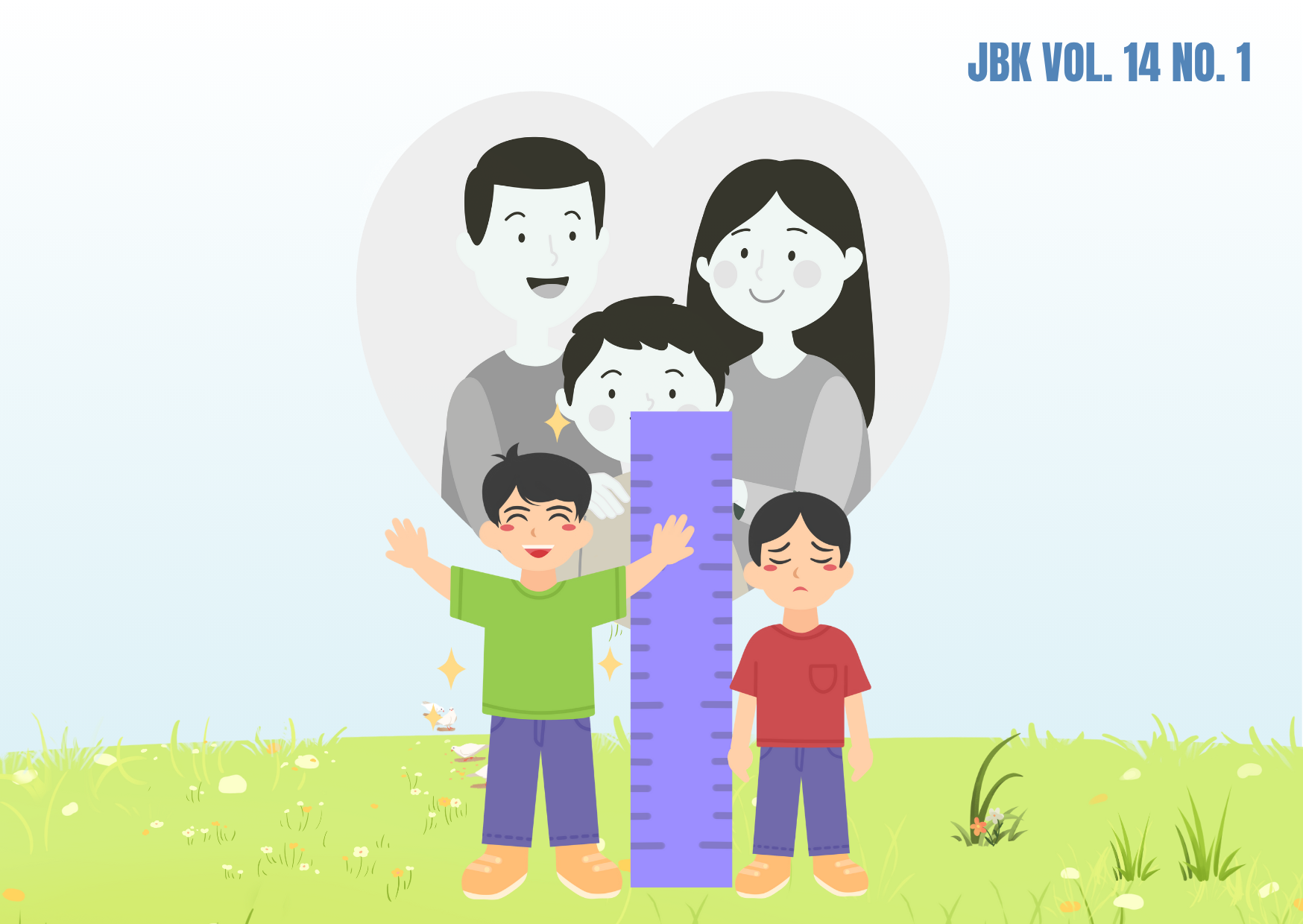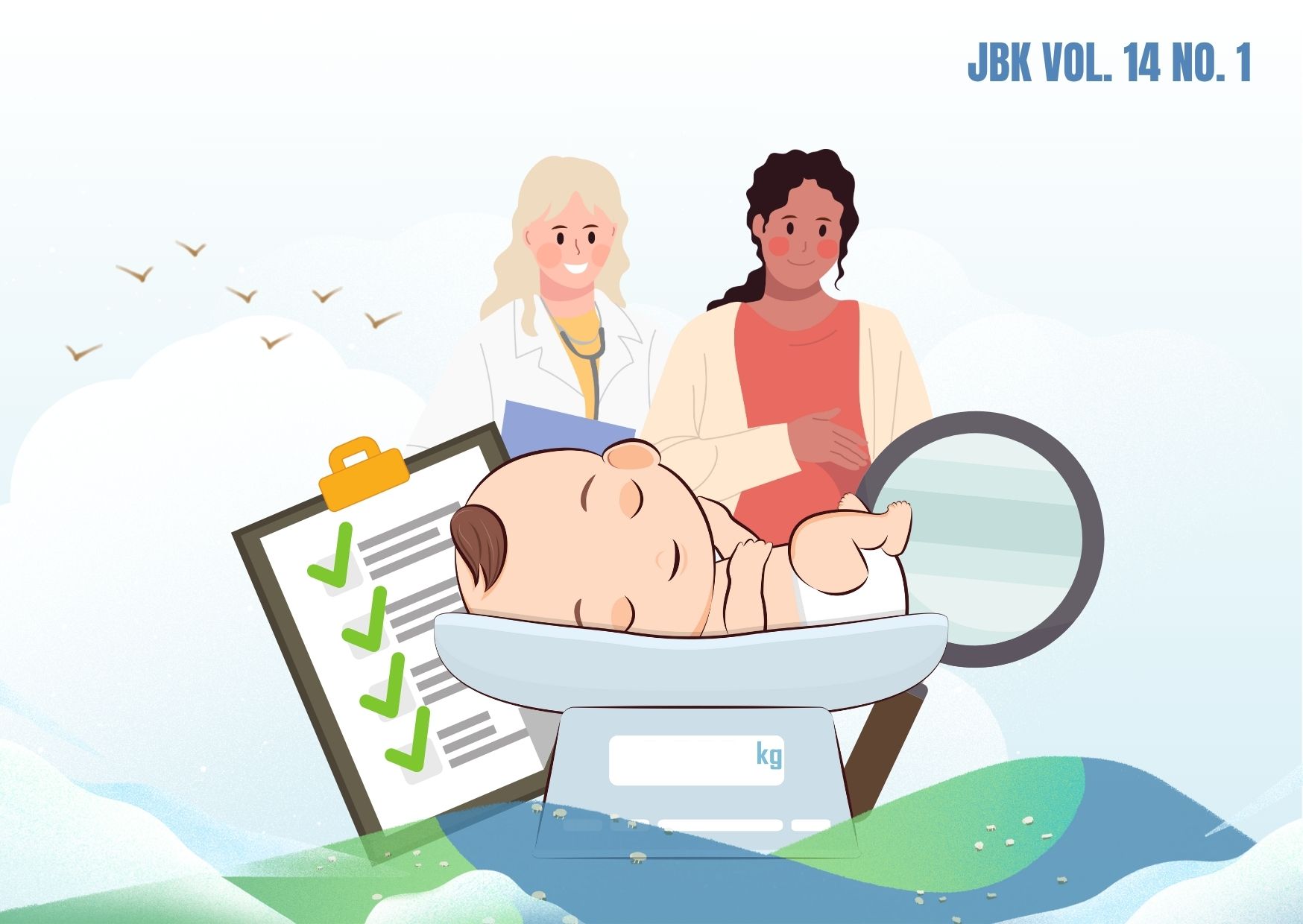RISK FACTORS FOR DIABETES MELLITUS IN INDONESIA: ANALYSIS OF IFLS DATA 2014

Downloads
Diabetes Mellitus (DM) remains a public health problem that needs attention in various countries, including in Indonesia that has the 4th largest DM cases globally. The World Health Organization (WHO) estimates that, by 2030, the number of people with DM will be twice higher than the current number which is 180 million people worldwide. Diabetes mellitus can be prevented and avoided by taking control of the risk factors. The purpose of this study was to assess the risk factors of Diabetes Mellitus in Indonesia. This is a secondary data analysis of the Indonesian Family Life Survey (IFLS) 5 which was a cross sectional survey. To analyze risk factors of DM, Chi-square and logistic regression test were used. The risk factors analyzed included sex, age, marital status, history of hypertension, cholesterol levels, obesity, smoking habit, employment status, habit of consuming fast food, consumption of sweet foods, and consumption soft drinks. Significant risk factors of diabetes mellitus included age (OR = 5.28, 95% CI: 4.37 – 6.37; p value = 0.001), marital status (OR = 1.69, 95% CI: 1.36 – 2.09; p value = 0.001), history of hypertension (OR = 2.67, 95% CI: 2.25 – 3.17; p value = 0.001), cholesterol levels (OR = 4.36, 95% CI: 3.58 – 5.31; p value = 0.001), employment status (OR = 1.52, 95% CI: 1.29 – 1.80; p value = 0.001), and habit of consuming sweet foods (OR = 0.63, 95% CI: 0.48 – 0.83; p value = 0.002).
Ramadany AF, Pujarini LA, Candrasari A. Hubungan Diabetes Melitus dengan Kejadian Stroke Iskemik di RSUD Dr. Moewardi Surakarta Tahun 2010. Biomedika [Internet]. 2013;5(2):11–16. Available from: https://doi.org/10.23917/biomedika.v5i2.264
Fatimah RN. Diabetes Melitus Tipe 2. J Major [Internet]. 2015;4(5):93–101. Available from: https://juke.kedokteran.unila.ac.id/index.php/majority/article/view/615
Indonesian Ministry of Health. Hari Diabetes Sedunia Tahun 2018 [Internet]. RI KK, editor. Pusat Data dan Informasi Kementrian Kesehatan RI. Jakarta Selatan; 2019. p. 1–10. Available from: https://pusdatin.kemkes.go.id/download.php?file=download/pusdatin/infodatin/infodatin-Diabetes-2018.pdf
Trisnawati SK, Setyorogo S. Faktor Risiko Kejadian Diabetes Melitus Tipe II di Puskesmas Kecamatan Cengkareng Jakarta Barat Tahun 2012. J Ilm Kesehat [Internet]. 2013;5(1):6–11. Available from: https://fmipa.umri.ac.id/wp-content/uploads/2016/06/YUNI-INDRI-FAKTOR-RESIKO-DM.pdf
Indonesian Ministry of Health. Keputusan Menteri Kesehatan Republik Indonesia Nomor HK.01.07/MENKES/603/2020 Tentang Pedoman Nasional Pelayanan Kedokteran Tata Laksana Diabetes Melitus Tipe 2 Dewasa [Internet]. Kementerian Kesehatan RI 2020 p. 1–183. Available from: https://yankes.kemkes.go.id/view_unduhan/14/kmk-no-hk0107menkes6032020
Indonesian Ministry of Health. Diabetes Melitus Penyebab Kematian Nomor 6 di Dunia: Kemenkes Tawarkan Solusi CERDIK Melalui Posbind [Internet]. Kementerian Kesehatan RI. 2013. p. 1. Available from: https://www.kemkes.go.id/article/view/2383/diabetes-melitus-penyebab-kematian-nomor-6-di-dunia-kemenkes-tawarkan-solusi-cerdik-melalui-posbindu.html
Isnaini N, Ratnasari R. Faktor Risiko Mempengaruhi Kejadian Diabetes Mellitus Tipe Dua. J Kebidanan dan Keperawatan Aisyiyah [Internet]. 2018;14(1):59–68. Available from: https://doi.org/10.31101/jkk.550
Indonesian Ministry of Health. Infodatin-Diabetes [Internet]. Pusat Data dan Informasi Kementrian Kesehatan RI: Situasi dan Analisis Diabetes. Jakarta Selatan; 2014. Available from: https://pusdatin.kemkes.go.id/download.php?file=download/pusdatin/infodatin/infodatin-diabetes.pdf
Prasetyani D, Sodikin. Analisis Faktor yang Mempengaruhi Kejadian Diabetes Melitus (DM) Tipe 2. J Kesehat Al-Irsyad [Internet]. 2017;10(2):1–9. Available from: http://jka.stikesalirsyadclp.ac.id/index.php/jka/article/view/76
Wicaksono RP. Faktor-Faktor yang Berhubungan dengan Kejadian Diabetes Melitus Tipe 2 (Studi Kasus di Poliklinik Penyakit dalam Rumah Sakit Dr. Kariadi) [Internet]. 2011. Available from: http://eprints.undip.ac.id/37123/
Idris H, Hasyim H, Utama F. Analysis of Diabetes Mellitus Determinants in Indonesia: A Study from the Indonesian Basic Health Research 2013. Acta Med Indones [Internet]. 2017;49(4):291–8. Available from: https://pubmed.ncbi.nlm.nih.gov/29348378/
Pitrida G. Faktor Resiko Kejadian Diabetes Melitus terhadap Pasien yang Datang Berobat ke Klinik Asri Wound Medan Tembung Tahun 2019. Koleks KTI D3 Keperawatan [Internet]. 2020;1–12. Available from: http://repo.poltekkes-medan.ac.id/jspui/handle/123456789/2126
Sitorus CE, Mayulu N, Wantania J. Hubungan Konsumsi Fast Food, Makanan/Minuman Manis dan Aktifitas Fisik dengan Kadar Gula Darah dan Status Gizi Mahasiswa Fakultas Kedokteran Universitas Sam Ratulangi. Indones J Public Heal Community Med [Internet]. 2020;1(4):10–17. Available from: https://ejournal.unsrat.ac.id/index.php/ijphcm/article/view/31025
Mutaqin ZZ. Dinamika Aspek Kesehatan dan Ekonomi dalam Kebijakan Pengendalian Minuman Berkarbonasi di Indonesia. Qual J Kesehat [Internet]. 2018;12(1):26–37. Available from: http://ejournal.poltekkesjakarta1.ac.id/index.php/adm/article/view/27
Fanani A. Hubungan Faktor Risiko dengan Kejadian Diabetes Mellitus. J Keperawatan [Internet]. 2020;12(3):371–378. Available from: http://download.garuda.kemdikbud.go.id/
Mongisidi G. Hubungan Antara Status Sosio-Ekonomi dengan Kejadian Diabetes Melitus Tipe 2 di Poliklinik Interna Blu RSUP Prof. Dr. R. D. Kandou Manado. J Kesehat Masy [Internet]. 2015;2(1):1–8. Available from: http://fkm.unsrat.ac.id/wp-content/uploads/2015/02/Jurnal-Gabby-Mongisidi.pdf
Manik CM, Ronoatmodjo S. Hubungan Diabetes Melitus dengan Hipertensi pada Populasi Obesitas di Indonesia (Analisis Data IFLS-5 Tahun 2014). Epidemiol Kesehat Indones [Internet]. 2019;3(1):19–24. Available from: https://journal.fkm.ui.ac.id/epid/article/view/3164
Retnowati N, Satyabakti P. The Correlation between Family Support with the Quality of Life of Patients with Diabetes Mellitus. J Berk Epidemiol [Internet]. 2015;3(1):57–68. Available from: http://dx.doi.org/10.20473/jbe.V3I12015.57-68
Nainggolan O, Kristanto A, Edison H. Determinan Diabetes Melitus Analisis Baseline Data Studi Kohort Penyakit Tidak Menular Bogor 2011. Bul Penelit Sist Kesehat [Internet]. 2013;16(3):331–339. Available from: http://ejournal.litbang.kemkes.go.id/index.php/hsr/article/view/3471
Widodo D, Retnaningtyas E, Fajar I. Faktor Risiko Timbulnya Diabetes Mellitus pada Remaja SMU. J Ners [Internet]. 2012;7(1):37–46. Available from: https://e-journal.unair.ac.id/JNERS/article/viewFile/3997/2711
Sirait AM, Sulistiowati E, Sihombing M, Kusuma A, Idayani S. Incident and Risk Factor of Diabetes Mellitus in Adults at Bogor. Prospective Cohort Study Risk Factors Non Comunicable Diseases. Bul Penelit Sist Kesehat [Internet]. 2015;18(2):151–160. Available from: https://doi.org/10.22435/hsr.v18i2.4315.151-160
Nur A, Fitria E, Zulhaida A, Hanum S. Hubungan Pola Konsumsi dengan Diabetes Melitus Tipe 2 pada Pasien Rawat Jalan di RSUD Dr. Fauziah Bireuen Provinsi Aceh. Media Penelit dan Pengemb Kesehat [Internet]. 2016;26(3):145–150. Available from: https://doi.org/10.22435/mpk.v26i3.4607.145-150
Copyright (c) 2022 Jurnal Biometrika dan Kependudukan

This work is licensed under a Creative Commons Attribution-NonCommercial-ShareAlike 4.0 International License.
Copyright©2022 Jurnal Biometrika dan Kependudukan (Journal of Biometrics and Population)
This work is licensed under a Creative Commons Attribution-NonCommercial-ShareAlike 4.0 International License.
1. Copyright of all journal manuscripts is held by the Jurnal Biometrika dan Kependudukan.
2. Formal legal provisions to access digital articles of the electronic journals are subject to the provision of the Creative Commons Attribution-ShareAlike license (CC BY-NC-SA), which means that Jurnal Kesehatan Biometrika dan Kependudukan to keep, transfer media/format, manage in the form of databases, maintain, and publish articles.
3. Published manuscripts both printed and electronic are open access for educational, research, and library purposes. Additionally, the editorial board is not responsible for any violations of copyright law.



































